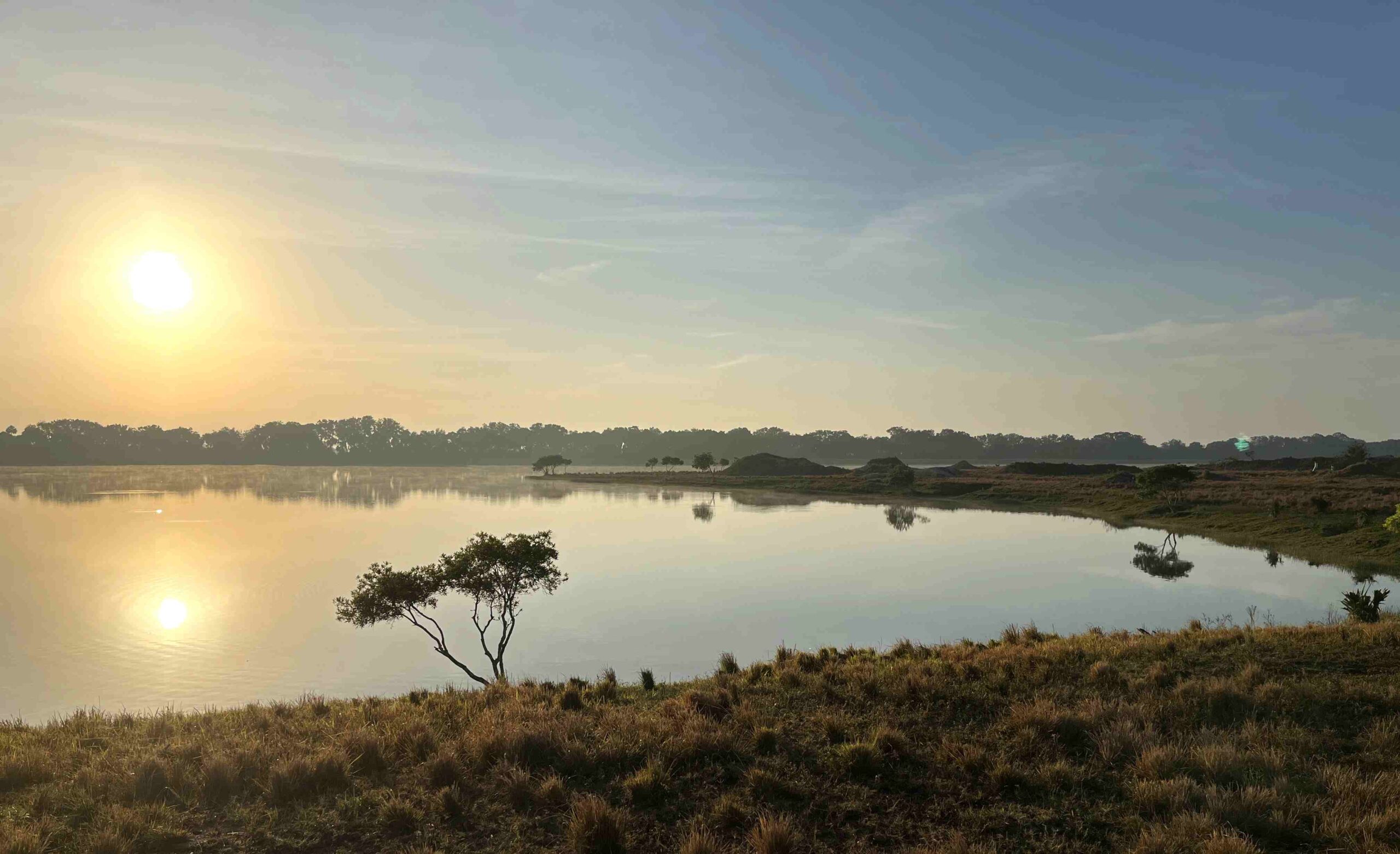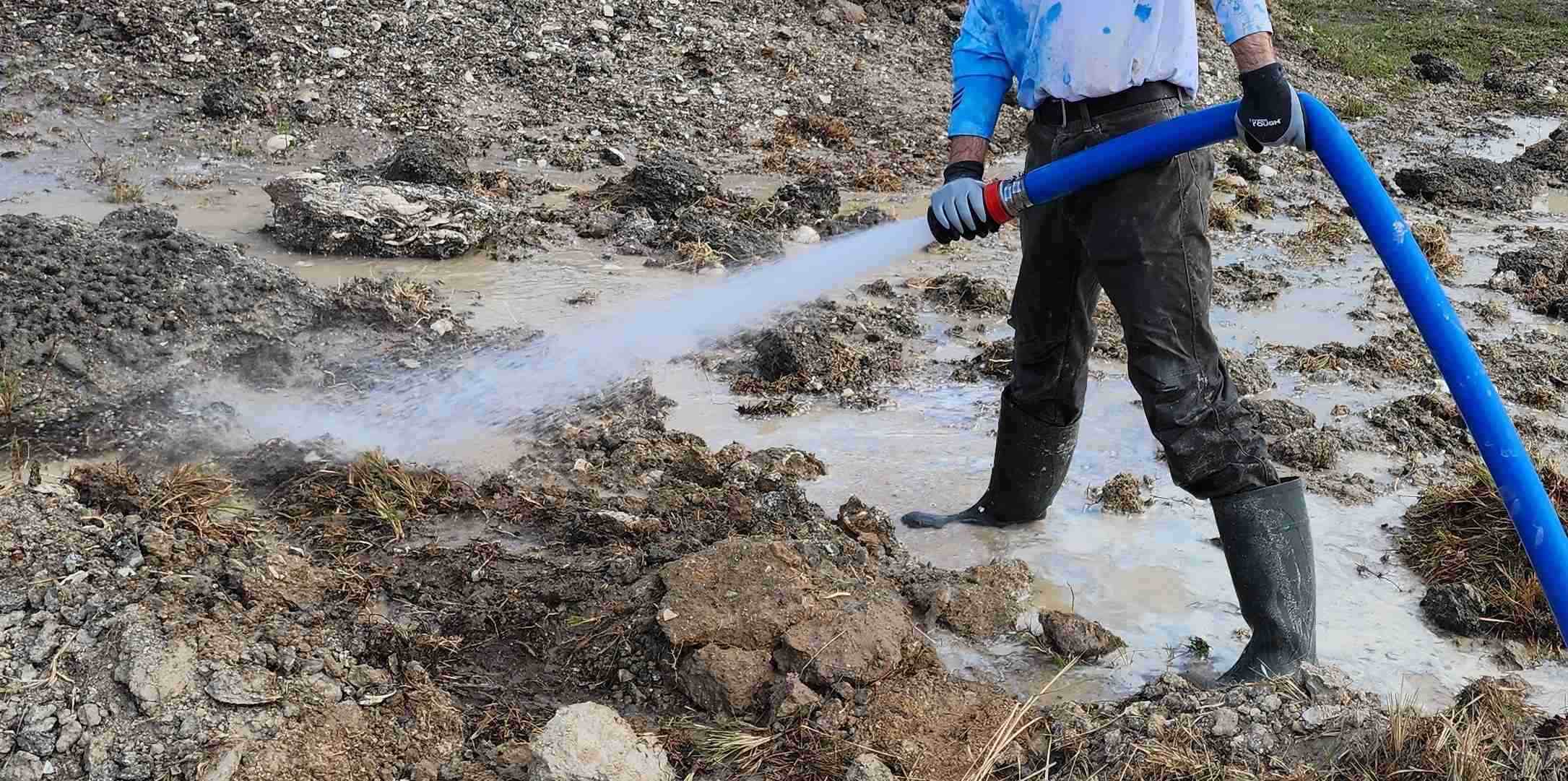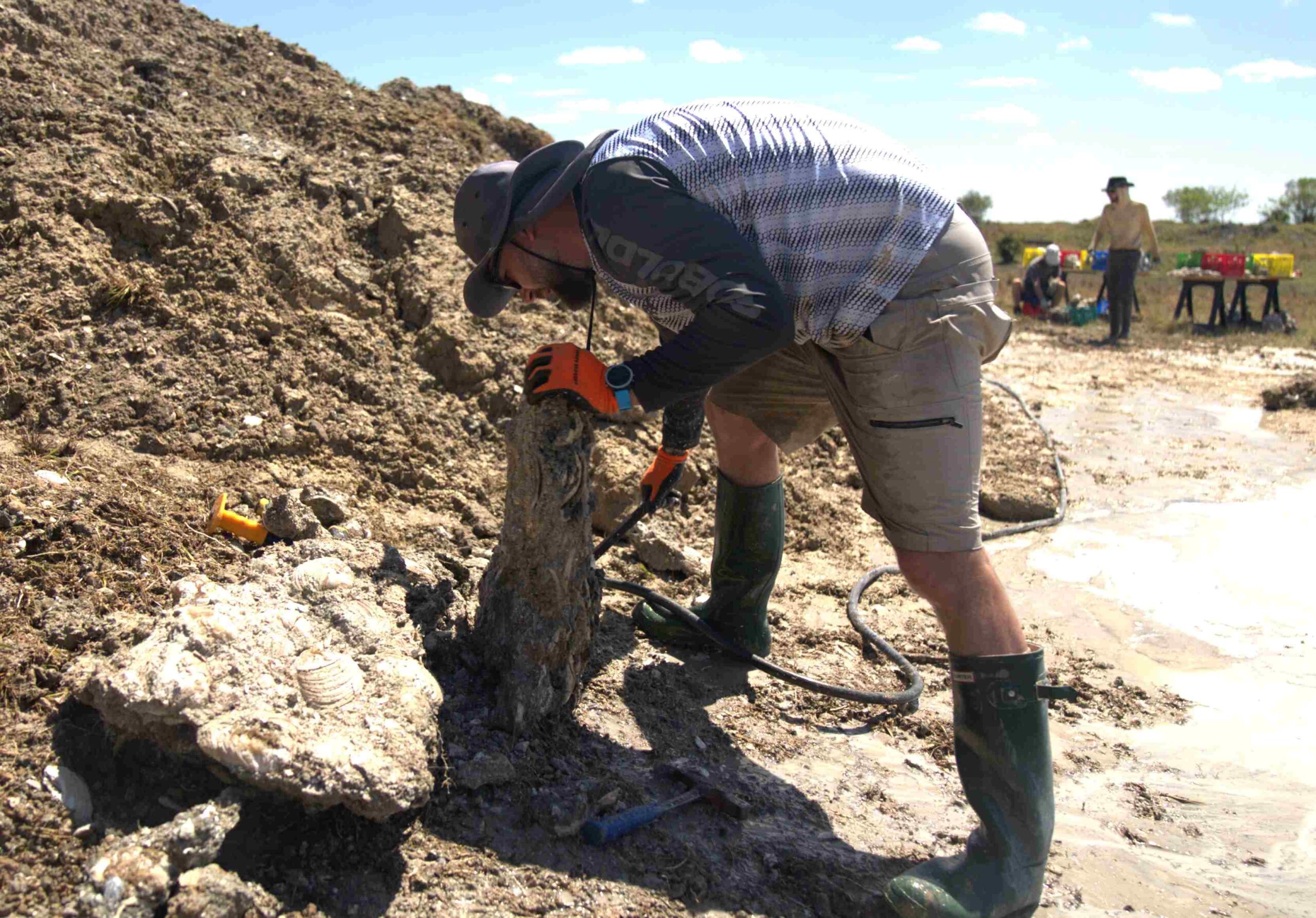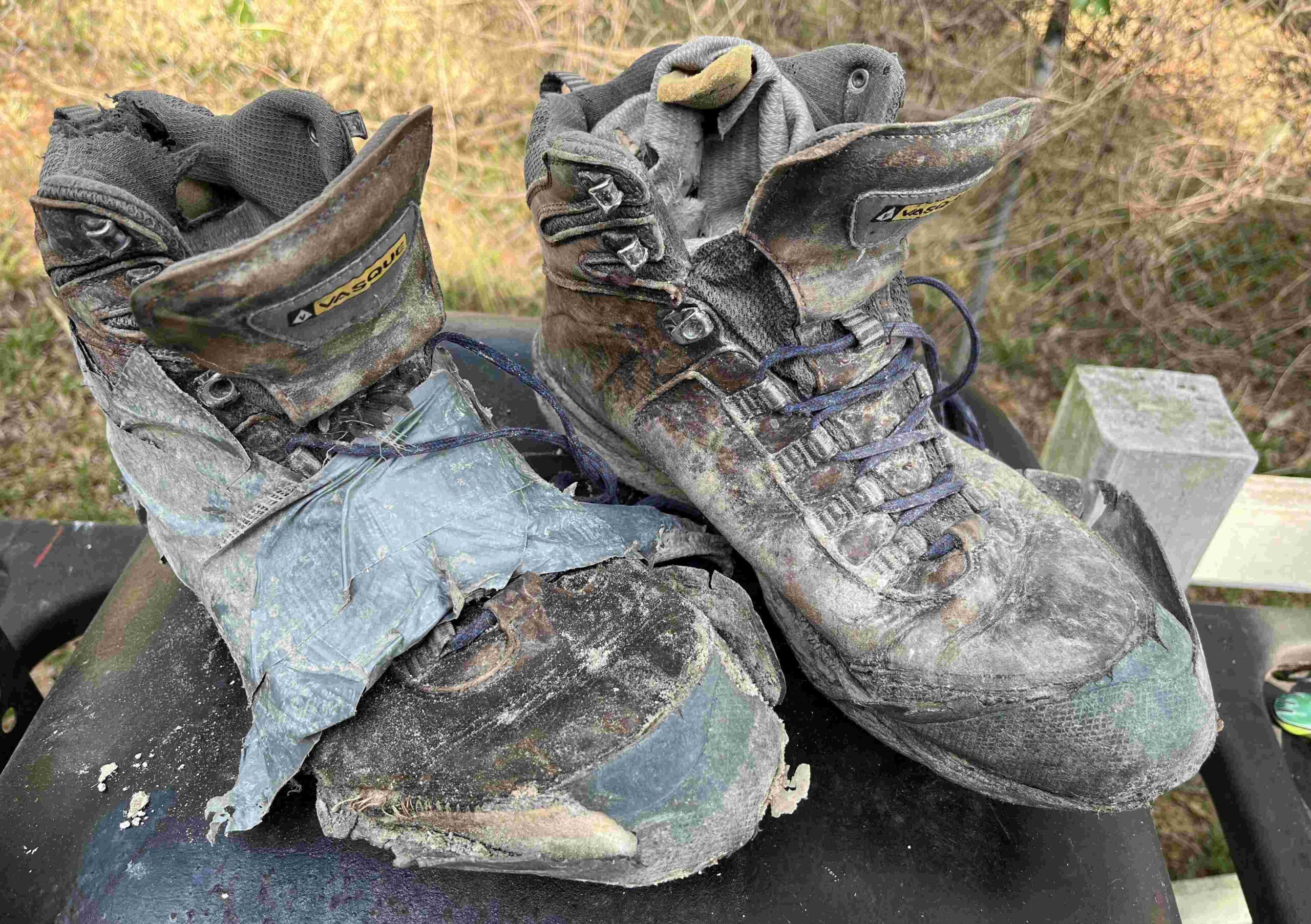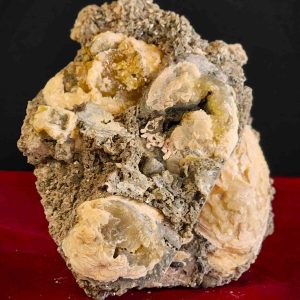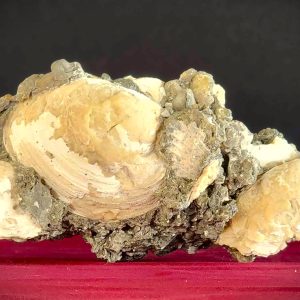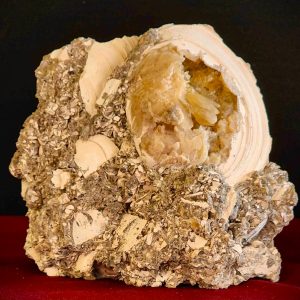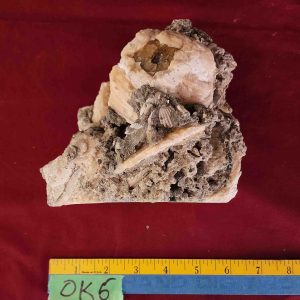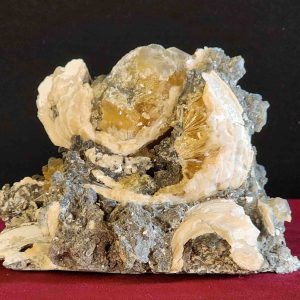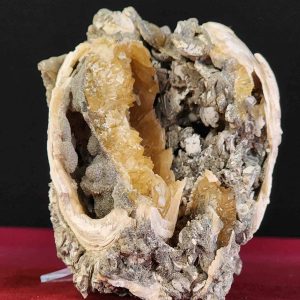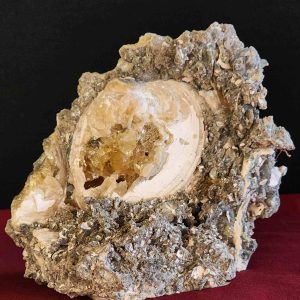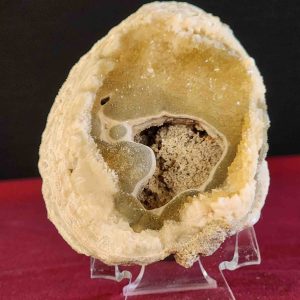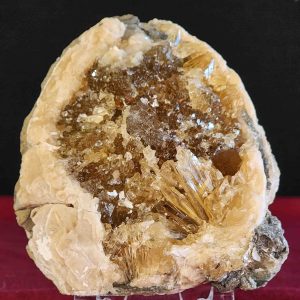Crystal Clams
Swipe the photo above to view more images of the site
The Story
“Incredible!” is the most commonly heard term when people first see this unusual combination of crystals and fossils. These crystal-replaced clams and conchs are known from only one site, an old aggregate quarry near Lake Okeechobee, Florida. They were discovered in the 1990s and became famous in both the mineral and fossil world. But by the time word of the site got around and we got a chance to visit the location, the quarry operation was already winding down. The mining played out in 2006 and the hole flooded in 2007. Unfortunately, the owner – who was into fossils and crystals and also very accommodating of strange paleontologists like us – got over-extended and went bankrupt soon after the quarry played out. The land was taken over by the bank and sold. Thirty years later, after meeting with the new owners, we arranged exclusive permission to research the site and perform limited excavations on the old quarry property. After several visits we discovered and mapped three sites where we dig and still find some of the classic crystalized clams that made this occurrence famous. But I assure you, it’s no picnic digging for these – it’s hard, dirty work. Even so, fossils like these, with gemmy crystals inside a stunning fossil, are exceptionally rare and make the effort well worth it. These specimens are a must for any serious collector.
How They Formed
The area around Lake Okeechobee was a shallow sea about 2 million years ago. As most bivalve communities are today, these clams lived in the sandy mud near the shoreline at the time. Sudden storm events – such as hurricanes and tropical storms – periodically buried the area under deep sediments, trapping the clams and other shellfish that lived there. As their bodies decayed, the process left behind cavities in the shells. With the heat and pressure that accompanied the pile-up of sediments, the original shell material (aragonite) became unstable and began to dissolve away. As it happened this provided the elements necessary to grow pure calcite crystals in the open spaces within some of the shells. Most of the clams and conchs in these old sediments do not have crystals. But even those that don’t are partially recrystallized and show very graphically the genesis of fossilization caught mid-way through the process. Even without the crystals, these fossil specimens are amazing. With crystals they are astounding!
Learn More To get a feel for our digging at this site, see the expedition video: “Okeechobee Crystal Clams“.
-
Crystalized Clam (OK10)
Crystalized fossil clams like this are exceptionally rare. These clams lived in a shallow sea that covered most of Florida 2 million years ago. A sudden storm event buried the clams, trapping cavities inside. When the shells began to dissolve, it provided the material necessary to grow calcite crystals in the open spaces. These unusual fossils are known from only one site, an old quarry near Lake Okeechobee. The quarry played out and flooded in 2007. We excavated this in 2023. An attractive and informative display card accompanies the specimen.
Notes specific to this specimen: Two excellent full clams trapped in matrix. Both are recrystallized calcite replaced with clear zones evident. NOTE: These clams do not have any of the honey calcite crystals. But they sure are very cool!
SIZE: 10″x 5″x 4″
NAME: Mercenaria permagna
AGE: Pleistocene 2 million years
UNIT: Nashua Formation
SITE: Okeechobee County, FloridaDocumentation: This authentic fossil specimen comes with a Certificate of Authenticity and Origin. In addition, an attractive and informative display card accompanies the specimen.
$265.00Crystalized Clam (OK10)
$265.00 -
Crystalized Clam (OK9)
Notes specific to this specimen: Lots going on here: Three shells with shiny nice dogtooth calcite crystals trapped in matrix. Plus a superb large shell with great recrystallization.
SIZE: 9″x 8″x 5″
NAME: Mercenaria permagna
AGE: Pleistocene 2 million years
UNIT: Nashua Formation
SITE: Okeechobee County, FloridaDocumentation: This authentic fossil specimen comes with a Certificate of Authenticity and Origin. In addition, an attractive and informative display card accompanies the specimen.
$385.00Crystalized Clam (OK9)
$385.00 -
Crystalized Clam (OK8)
Notes specific to this specimen: Calcite replacing multiple clam shells trapped in matrix, some with clearly defined crystals. One of these is a full clam with crystal zones evident.
SIZE: 11″x 5″x 5″
NAME: Mercenaria permagna
AGE: Pleistocene 2 million years
UNIT: Nashua Formation
SITE: Okeechobee County, FloridaDocumentation: This authentic fossil specimen comes with a Certificate of Authenticity and Origin.
$280.00Crystalized Clam (OK8)
$280.00 -
Crystalized Clam (OK7)
Notes specific to this specimen: Great honey calcite crystals replacing one clam shell trapped in matrix. Some excellent radial calcite crystals are on this piece as well.
SIZE: 7″x 5″x 7″NAME: Mercenaria permagna
AGE: Pleistocene 2 million years
UNIT: Nashua Formation
SITE: Okeechobee County, FloridaDocumentation: This authentic fossil specimen comes with a Certificate of Authenticity and Origin. In addition, an attractive and informative display card accompanies the specimen.
$310.00Crystalized Clam (OK7)
$310.00 -
Crystalized Clam (OK6)
Crystalized fossil clams like this are exceptionally rare. These clams lived in a shallow sea that covered most of Florida 2 million years ago. A sudden storm event buried the clams, trapping cavities inside. When the shells began to dissolve, it provided the material necessary to grow calcite crystals in the open spaces. These unusual fossils are known from only one site, an old quarry near Lake Okeechobee. The quarry played out and flooded in 2007. We excavated this in 2023. An attractive and informative display card accompanies the specimen.
Notes specific to this specimen: Great honey calcite crystals replacing multiple clam shells trapped in matrix. This piece has a sawn flat bottom so it stands up nicely on its own
SIZE: 7″x 4″x 5″
NAME: Mercenaria permagna
AGE: Pleistocene 2 million years
UNIT: Nashua Formation
SITE: Okeechobee County, FloridaDocumentation: This authentic fossil specimen comes with a Certificate of Authenticity and Origin. In addition, an attractive and informative display card accompanies the specimen.
$410.00Crystalized Clam (OK6)
$410.00 -
Crystalized Clam (OK5)
Notes specific to this specimen: Great honey calcite crystals replacing multiple clam shells trapped in matrix. Some excellent radial calcite crystals here! This piece has a sawn flat bottom so it stands up nicely on its own.
SIZE: 7″x 5″x 5″NAME: Mercenaria permagna
AGE: Pleistocene 2 million years
UNIT: Nashua Formation
SITE: Okeechobee County, FloridaDocumentation: This authentic fossil specimen comes with a Certificate of Authenticity and Origin. In addition, an attractive and informative display card accompanies the specimen.
$550.00Crystalized Clam (OK5)
$550.00 -
Crystalized Clam (OK4)
Notes specific to this specimen: There are two clams here in this piece of matrix – one inside the other – creating a double hollow with great dogtooth calcite crystals replacing the inner clamshell and some crystals in the outer one as well. A unique and rare find.
SIZE: 6″x 4″x 5″
NAME: Mercenaria permagna
AGE: Pleistocene 2 million years
UNIT: Nashua Formation
SITE: Okeechobee County, FloridaDocumentation: This authentic fossil specimen comes with a Certificate of Authenticity and Origin. In addition, an attractive and informative display card accompanies the specimen.
$845.00Crystalized Clam (OK4)
$845.00 -
Crystalized Clam (OK3)
Notes specific to this specimen: Great honey calcite crystals replacing the clam shell trapped in matrix. This piece has a sawn flat bottom so it stands up nicely on its own. Nice display specimen
SIZE: 8″x 5″x 5″
NAME: Mercenaria permagna
AGE: Pleistocene 2 million years
UNIT: Nashua Formation
SITE: Okeechobee County, FloridaDocumentation: This authentic fossil specimen comes with a Certificate of Authenticity and Origin. In addition, an attractive and informative display card accompanies the specimen.
$425.00Crystalized Clam (OK3)
$425.00 -
Crystalized Clam (OK2)
Notes specific to this specimen: A complete clam with druzy honey calcite crystals exposed on the front and a recrystallized shell on back. A very unique specimen.
SIZE: 4″x 3″x 2″
NAME: Mercenaria permagna
AGE: Pleistocene 2 million years
UNIT: Nashua Formation
SITE: Okeechobee County, FloridaDocumentation: This authentic fossil specimen comes with a Certificate of Authenticity and Origin. In addition, an attractive and informative display card accompanies the specimen.
$490.00Crystalized Clam (OK2)
$490.00 -
Crystalized Clam (OK1)
Notes specific to this specimen: This complete clam is packed full with honey calcite. There are some fantastic radial calcite crystals amidst a solid honey calcite matrix. The back is a partially recrystallized shell. This is a singularly unique find.
SIZE: 5″x 3″x 2″
NAME: Mercenaria permagna
AGE: Pleistocene 2 million years
UNIT: Nashua Formation
SITE: Okeechobee County, FloridaDocumentation: This authentic fossil specimen comes with a Certificate of Authenticity and Origin. In addition, an attractive and informative display card accompanies the specimen.
$440.00Crystalized Clam (OK1)
$440.00

